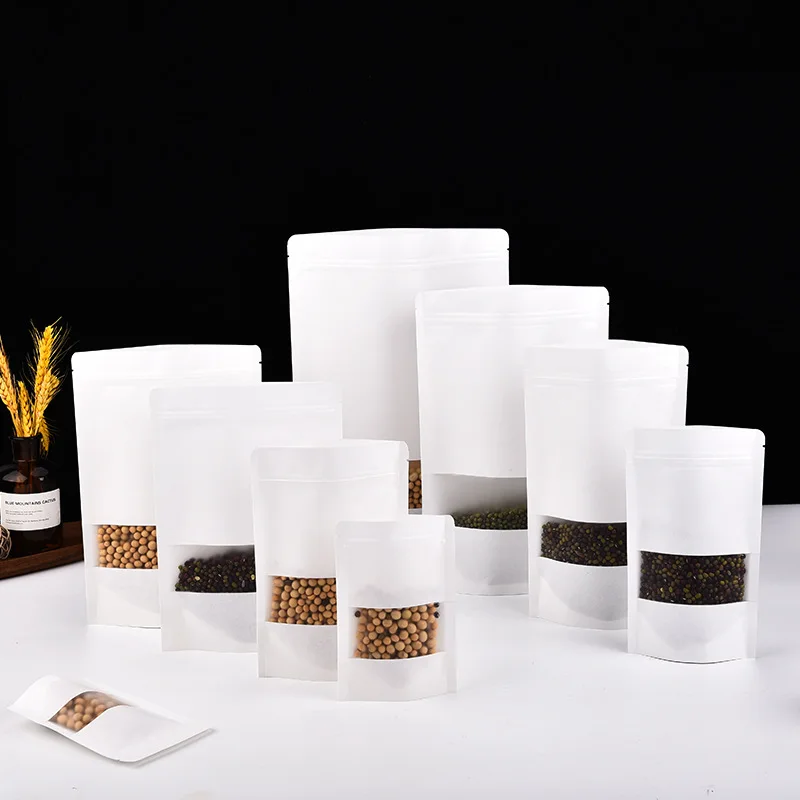The barrier properties of different materials used in kraft paper bags with windows can significantly affect the shelf life of the packaged products. Here’s how:
- Moisture Barrier:
- Plastic Films: Materials like polyethylene (PE) or polypropylene (PP) have excellent moisture barrier properties. When used as a window material, they help prevent moisture ingress, which can otherwise lead to product degradation, clumping, or mold growth. A strong moisture barrier extends the shelf life of products, particularly those susceptible to moisture damage, such as dry pet food or coffee beans.
- Coated Papers: Some kraft paper bags may feature coatings or laminations that enhance their moisture resistance. While not as effective as plastic films, these coatings provide a degree of protection against ambient moisture, thereby contributing to the preservation of product quality and freshness.
- Oxygen Barrier:
- Metalized Films: Materials like aluminum foil or metalized films offer excellent oxygen barrier properties. By blocking oxygen transmission, they help prevent oxidation, rancidity, and flavor degradation in oxygen-sensitive products like coffee beans or nuts. Incorporating metalized windows in kraft paper bags can significantly extend the shelf life of such products by maintaining their freshness and flavor over time.
- Plastic Films with Oxygen Barrier: Certain plastic films are engineered to provide enhanced oxygen barrier properties through specialized coatings or multilayer structures. kraft paper bags with window When used as window materials, these films help minimize oxygen exposure, thus prolonging the shelf life of packaged goods.
- Light Barrier:
- Opaque Materials: Kraft paper itself offers some degree of light protection due to its opaque nature. However, adding a window to the bag introduces a potential vulnerability to light exposure, which can degrade light-sensitive products such as spices, herbs, or certain food ingredients. Using UV-resistant or tinted window materials can mitigate this effect and help preserve product freshness.
- UV-Blocking Coatings: Some kraft paper bags may feature UV-blocking coatings or laminations to protect the window and its contents from harmful UV radiation. These coatings reduce the risk of UV-induced degradation, color fading, or nutrient loss, thereby contributing to extended shelf life for light-sensitive products.
- Aroma Barrier:
- Plastic Films with Aroma Barrier: Certain plastic films are designed to provide an aroma barrier, preventing the escape of volatile compounds and preserving the product’s aroma and flavor. When used as window materials, these films help maintain the sensory characteristics of aromatic products like coffee or tea, enhancing their shelf life by retaining their freshness and aroma.
Overall, the barrier properties of materials used in kraft paper bags with windows play a crucial role in determining the shelf life of packaged products. By selecting window materials with appropriate barrier properties tailored to the specific needs of the product, manufacturers can effectively protect against moisture ingress, oxygen exposure, light degradation, and aroma loss, thereby maximizing product freshness and quality throughout its shelf life.
